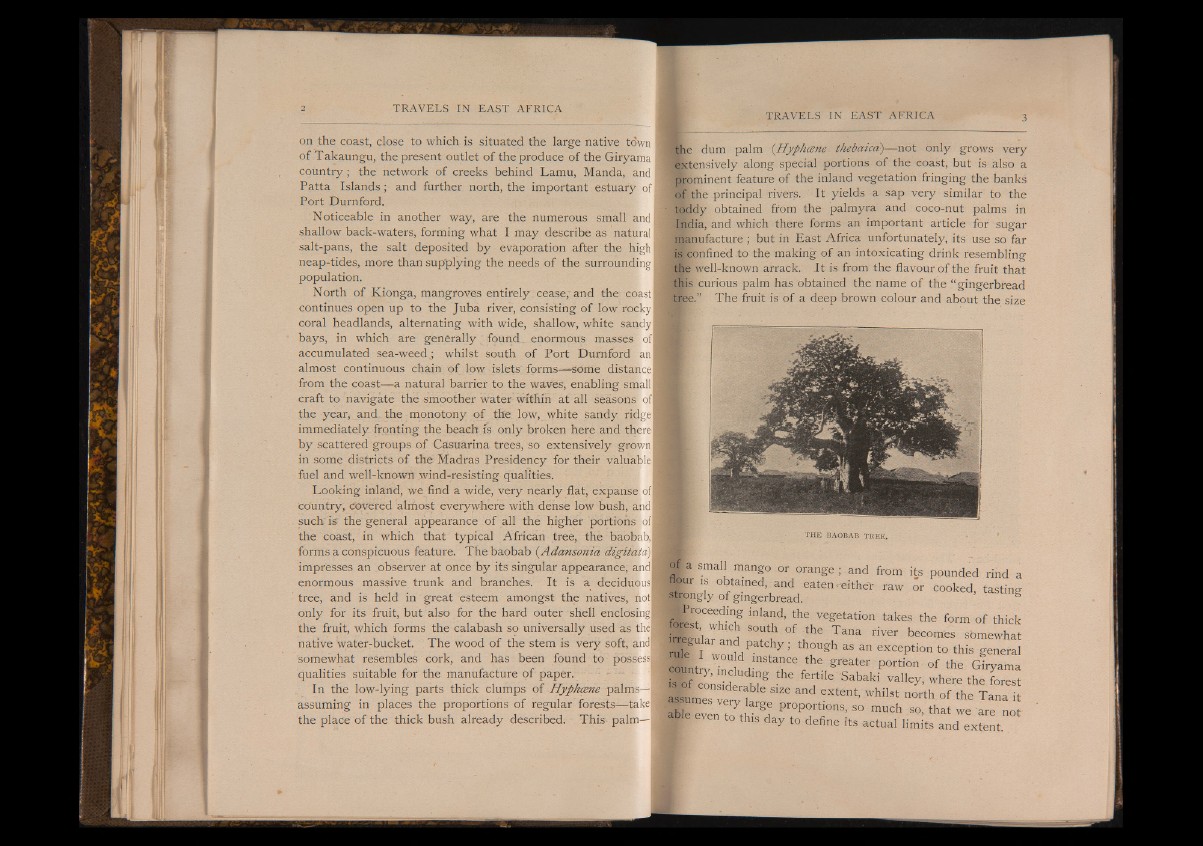
on the coast, close to which is situated the large native tdwn
of Takaungu, the present outlet of the produce of the Giryama
country; the network of creeks behind Lamu, Manda, and
Patta Islands; and further north, the important estuary of I
Port Durnford.
Noticeable in another way, are the numerous small and I
shallow back-waters, forming what I may describe as natural I
salt-pans, the salt deposited by evaporation after the high I
neap-tides, more than supplying the needs of the surrounding I
population.
North of Kionga, mangroves entirely cease,'and the coast I
continues open up to the Juba river, consisting of low rocky I
coral headlands, alternating with wide, shallow, white sandy I
bays, in which are generally found enormous masses ofl
accumulated sea-weed,; whilst south of Port DurnfordCanI
almost continuous chain of low islets forms— some distance!
from the coast— a natural barrier to the waves, enabling small!
craft to navigate the smoother water within at all seasons ofl
the year, and the monotony of the low, white sandy ridge I
immediately- fronting the beach is only broken here and there!
by scattered groups of Casuarina trees, so extensively grown!
in some districts of the Madras Presidency for their valuable!
fuel and well-knowfi wind-resisting qualities.
Looking inland, we find a wide, very nearly flat, expanse ofl
country, covered almost everywhere with dense low bush, and!
such is the general appearance of all the higher portions ofl
the coast, in which that typical African tree, the baobab,!
forms a conspicuous feature. The baobab (Adansonia digitata\
impresses an observer at once by its singular appearance, and*
enormous massive trunk and branches. It is a deciduous!
tree, and is held in great esteem amongst the natives, hot!
only for its fruit, but also for the hard outer shell enclosing!
the fruit, which forms the calabash so universally used as The!
native water-bucket. The wood of the stem is very soft, and!
somewhat resembles cork, and has been found to possess!
qualities suitable for the manufacture of paper.
In the low-lying parts thick clumps of Hypkcene palms—I
assuming in places the proportions of regular forests— take!
the place of the thick bush already described. This- palm—I
TRAVELS IN EAST AFRICA 3
the dum palm (Hyphcene thebaica)— not only grows very
extensively along special portions of the coast, but is also a
prominent feature of the inland vegetation fringing the banks
of the principal rivers. It yields a sap very similar to the
toddy obtained from the palmyra and coco-nut palms in
India, and which there forms an important article for sugar
manufacture ; but in East Africa unfortunately, its use so far
is confined to the making of an intoxicating drink resembling
the well-known arrack. It is from the flavour of the fruit that
this curious palm has obtained the name of the “ gingerbread
tree.” The fruit is of a deep brown colour and about the size
THE BAOBAB TREE,
Of a small mango or orange ; and from its pounded rind a
flour is obtained, and eaten either raw or cooked, tasting
strongly of gingerbread. .
• K t t f H i inla? d’ ^he/egetation takes the form of thick
l l l f l i H ° f ■ riV6r beCOraes ste ew h *t
rule T m patchy; though as an exception to this general
l l l l f e nSta| M » P° rti6n ° f the Grfryama
i s T c o ^ s S ^ f T S M t valley, where the forest
assumes vervd S i eXtent’ whilst north of the Tana it
able even to th H i ProP°rtlotls- so much so, that we are not
this day to define its actual limits and extent.